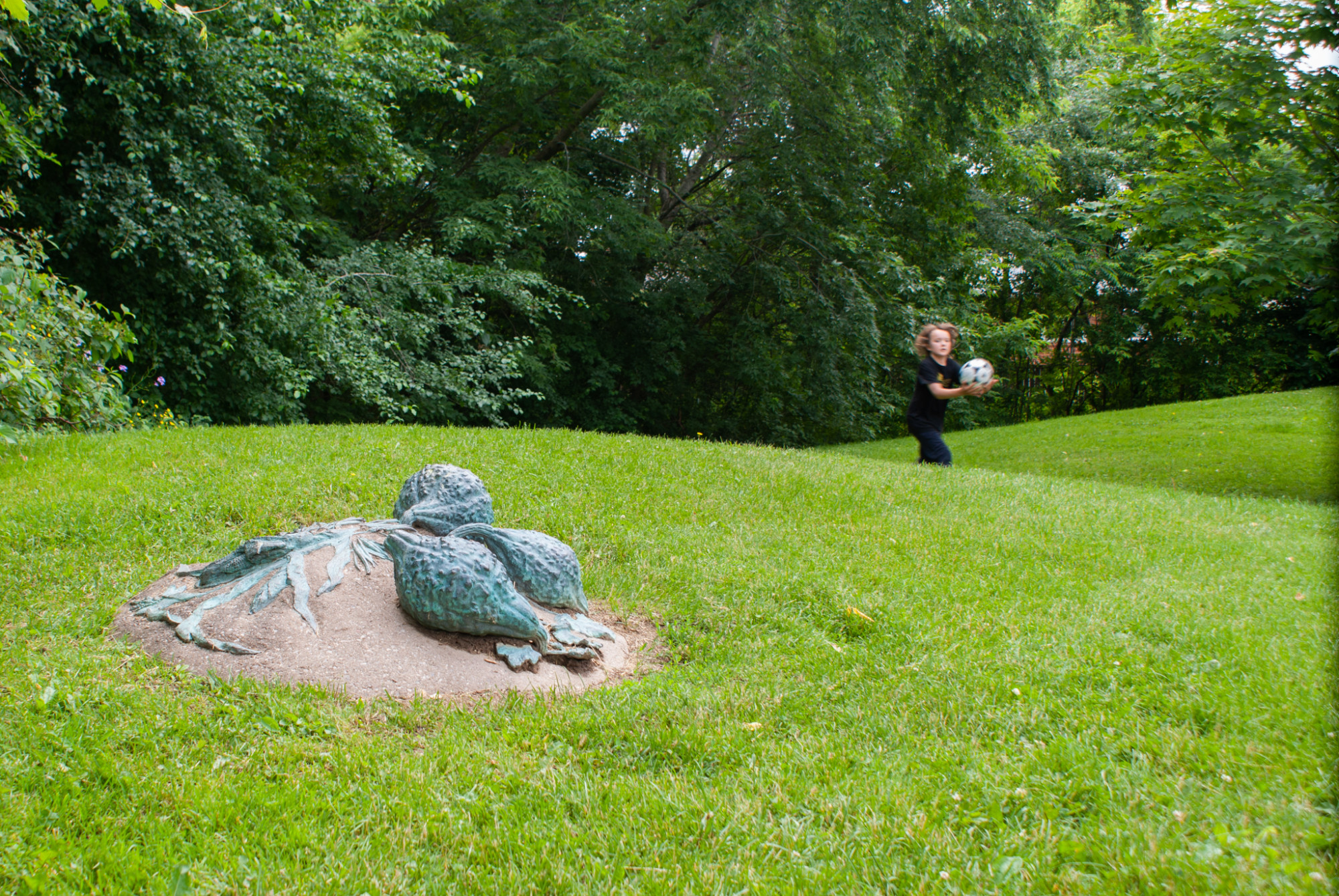
Time Track
Published Date: Jul. 7 2022
Image: Loraine Luong, 2022

Japanese Tree Lilac and slide in Dempsey Park, photo credit: Loraine Luong, 2022
What do you think of when asked about public art? My immediate default used to be sculptures, more specifically, monuments. Therefore, when I arrived at Dempsey Park, I was confused about where to find the public artwork Time Track (2000). Children playing at the park came to my aid. I must have seemed quite lost because they were eager to help, telling me what the work was, and that there was more on the other side of the hill. The children had discovered them while playing in the park.

Northern Leopard Frog’s footprints, photo credit: Loraine Luong, 2022
The Dempsey Park, named after the community gathering space Dempsey Store, is located on the historical site of the Gibson Family Farm in North York. However, via collaboration with the landscape designers at MBTW, artists Mille Chan and Warren Quigley were not only able to include the farmstead history, but also reflect upon the Indigenous presence long before the colonial settlement, which continues to grow and thrive today. To achieve this, Time Track differs from the usual public art in several ways.

Historical remnants, photo credit: Loraine Luong, 2022
Time Track is not as “monumental” as the typical sculptures we find in public parks. Art Historian Wu Hung cites in Monumentality in Early Chinese Art and Architecture, that “monumentality” is usually defined in terms of “permanence, grandiosity, and stillness” in the discussion of public sculpture. However, he notes that the universality of such a definition remains questionable. And Time Track is an excellent example of rejecting the essentializing qualification for monumental public installation.

Halter knots, photo credit: Loraine Luong, 2022
Time Track is not “grand” and remarkable. Even though the scale of its location is substantial, dispersed around the park, its symbolic components are hard to look for. Even with the children’s help, I am unsure whether I captured all the intriguing symbols. Most of them were embedded in the pavement, meaning that the usual park visitors, including children, families, and runners, constantly stepped on the bronze pieces. Twenty years have passed since its installation, and some pieces were worn and changed colours. This direct physical interaction interrupts Time Track’s “stillness” and allows little possibility for remaining permanent.

Walking on Time Track, photo credit: Loraine Luong, 2022
Nevertheless, I think Time Track is monumental in its own way. Site-specific, Chan and Quigley’s work includes a collection of local agricultural tools cast from the farmstead era, and animal and plant prints left on the land by time. The First Nations Agricultural Mound is the only part that stands above the ground, and celebrates the “three sisters” that support each other in growth: corn, bean, and squash.

The First Nations Agricultural Mound, photo credit: Loraine Luong, 2022

Ant on leaf, photo credit: Anqi Li, 2022
When I was leaving the park, the children who had helped me had returned to their playing. Running on the crisscrossing pathways, they animated the park and the secret Time Track.

Ginkgo leaves, photo credit: Loraine Luong, 2022





